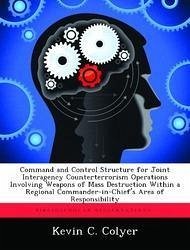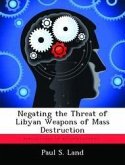The threat of state or nonstate actors conducting terrorism utilizing weapons of mass destruction (WMD) against U.S. personnel, property, or other locations of U.S. interest outside the continental U.S. or its territories represents a serious threat to U.S. vital interests. While numerous U.S. government agencies have joined the effort to prepare against this possibility, the system remains disjointed and inefficient. This study presents a command and control structure that meets the requirements of the operation to solve this dilemma. The study first examines the WMD counterterrorism environment and the agencies currently involved to determine what is required to counter the threat. From this a set of command and control criteria is established to compare against current command and control models. The results of comparing the requirements to current models revealed two gaps in the command and control of these operations. The study continues to propose an organizational structure that maintains the strengths of the current system and fills the gaps discovered during the research.
Hinweis: Dieser Artikel kann nur an eine deutsche Lieferadresse ausgeliefert werden.
Hinweis: Dieser Artikel kann nur an eine deutsche Lieferadresse ausgeliefert werden.








